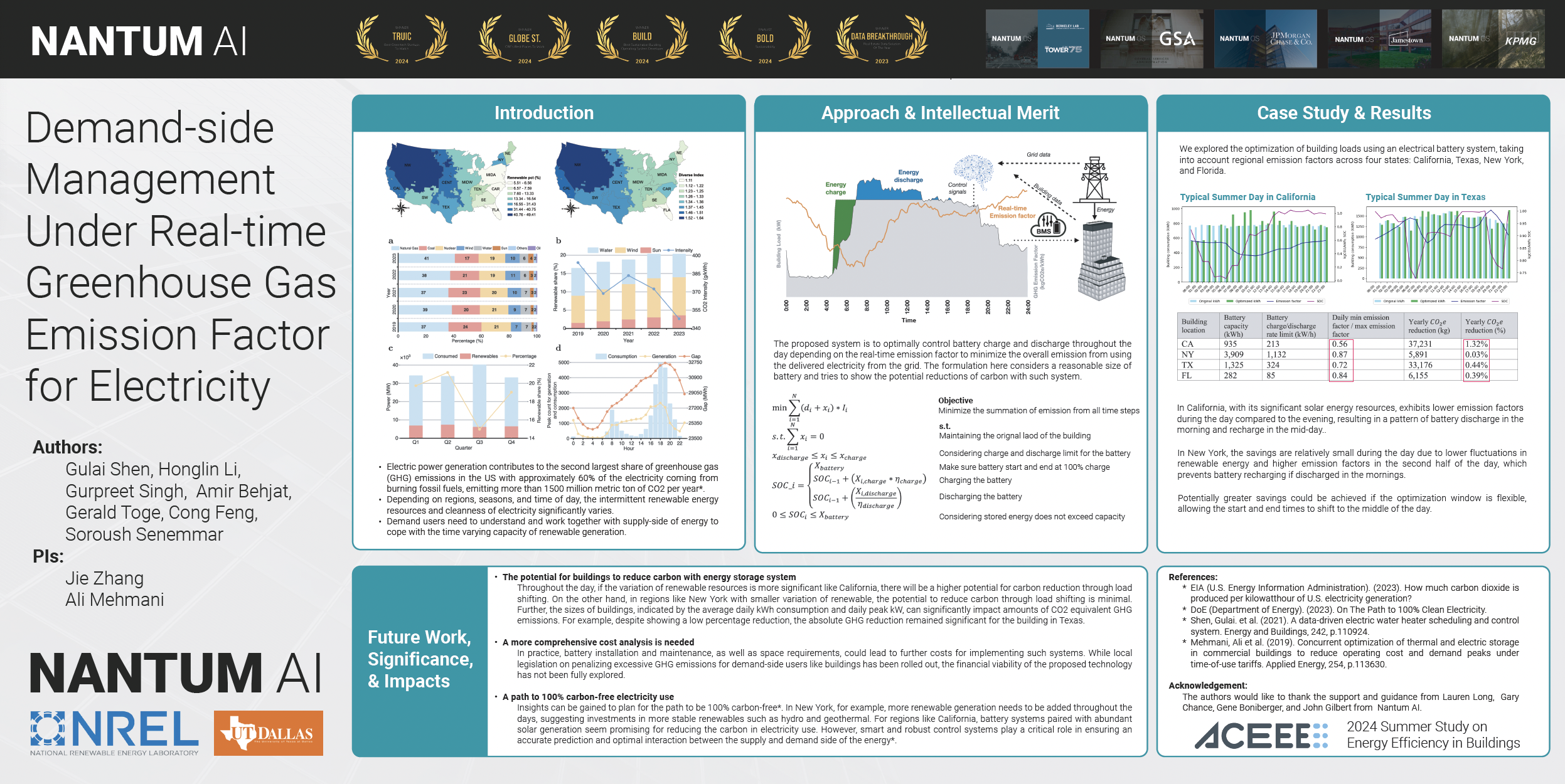Demand-Side Management Under Real-Time Greenhouse Gas Emission Factor for Electricity
Gulai Shen, Hongling Li, Gurpreet Singh, Amir Behjat, Gerald Toge, Souroush Senemmar, Cong Feng, Jie Zhang, Ali Mehmani
Research and Development, Nantum AI
The University of Texas at Dallas
National Renewable Energy Laboratory (NREL)
Electric power generation contributes to the second largest share of greenhouse gas (GHG) emissions in the US. The direct and indirect carbon emissions created from generating electricity vary from resources of generation, and power plant efficiency. Approximately 60% of the electricity comes from burning fossil fuels, mostly coal and natural gas, emitting more than 1500 million metric tons of 𝐶𝑂 per year. Depending on region and time of day, the cleanness of electricity significantly varies as more and more intermittent renewable energy resources, such as solar and wind, are added to the grid. With the growing awareness and regulations on GHG emissions, the need for accurate carbon measurement and technologies that reduce GHG for both the supply and demand side is ever-increasing. To optimally control demand-side users such as buildings, balance supply and demand, and incorporate energy storage technologies to reduce overall GHG emissions, the real-time emission factor and its predictions play critical roles. Here, we use the open-source real-time electricity GHG Emission Factor that covers all states in the US and four sample buildings’ demand data from Nantum across different regions to propose an optimization framework for potential emission reduction through load shifting. This study highlights the importance of raising awareness, monitoring, and accounting for real-time GHG emissions. Furthermore, it proves the viability of controlling buildings with electric energy storage systems to reduce carbon emissions for demand-side users.
